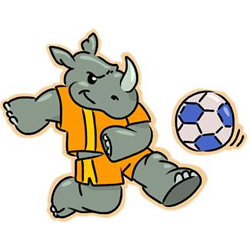Skip over navigation

Or search by topic
Number and algebra
Geometry and measure
Probability and statistics
Working mathematically
Advanced mathematics
For younger learners
Which Team Will Win?
Age 11 to 14
Challenge Level 





- Problem
- Teachers' Resources
This problem is part of the Great Expectations: Probability through Problems collection. It is designed for classroom use; see the Teachers' Resources for a suggested classroom approach.
 Every weekend, Team Beaver and Team Yeti play each other at 2-Goal Football - they play until two goals have been scored. Sometimes games last only a minute or two, sometimes they seem to go on for ever.
Every weekend, Team Beaver and Team Yeti play each other at 2-Goal Football - they play until two goals have been scored. Sometimes games last only a minute or two, sometimes they seem to go on for ever.
Over a 36-week season, which team is likely to win more games?
You can investigate this question through a practical experiment.
You can model this with a die with four yellow faces (Team Yeti) and two blue faces (Team Beaver).
If this is not available, use an ordinary die and let 1, 2, 3 and 4 correspond to a yellow face, and 5 and 6 to a blue face.
First investigate what happens for one game:
Now repeat the experiment 36 times in total, to get the results for a full season.
Are you surprised by your results? How do they compare with what you would expect?
Which team scores most often? Does this mean they will always win?
How often would you expect each team to score?
Did the Yetis win the proportion of games you would expect? How about the Beavers? Can you explain what happened?
You can explore the scenario in this problem using this interactive environment.
 Every weekend, Team Beaver and Team Yeti play each other at 2-Goal Football - they play until two goals have been scored. Sometimes games last only a minute or two, sometimes they seem to go on for ever.
Every weekend, Team Beaver and Team Yeti play each other at 2-Goal Football - they play until two goals have been scored. Sometimes games last only a minute or two, sometimes they seem to go on for ever.Over a 36-week season, which team is likely to win more games?
You can investigate this question through a practical experiment.
You can model this with a die with four yellow faces (Team Yeti) and two blue faces (Team Beaver).
If this is not available, use an ordinary die and let 1, 2, 3 and 4 correspond to a yellow face, and 5 and 6 to a blue face.
First investigate what happens for one game:
- Throw the die. A yellow (1, 2, 3, 4) face means a goal to Team Yeti, a blue (5, 6) face means a goal to Team Beaver. Record this on the Results Worksheet - you might find it helpful to use a yellow colour for Team Yeti and a blue colour for Team Beaver.
- Throw the die again, to see who scores the second goal, and record it on the Results Worksheet.
Now repeat the experiment 36 times in total, to get the results for a full season.
Are you surprised by your results? How do they compare with what you would expect?
Which team scores most often? Does this mean they will always win?
How often would you expect each team to score?
Did the Yetis win the proportion of games you would expect? How about the Beavers? Can you explain what happened?
You can explore the scenario in this problem using this interactive environment.
You may also like
The Dog Ate My Homework!
A practical experiment which uses tree diagrams to help students understand the nature of questions in conditional probability.

